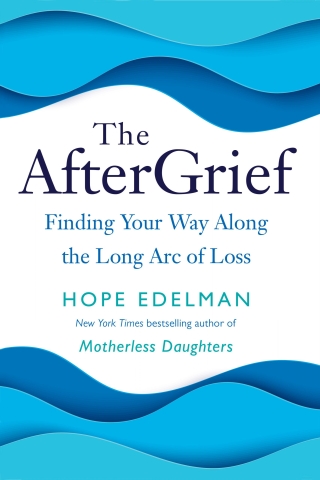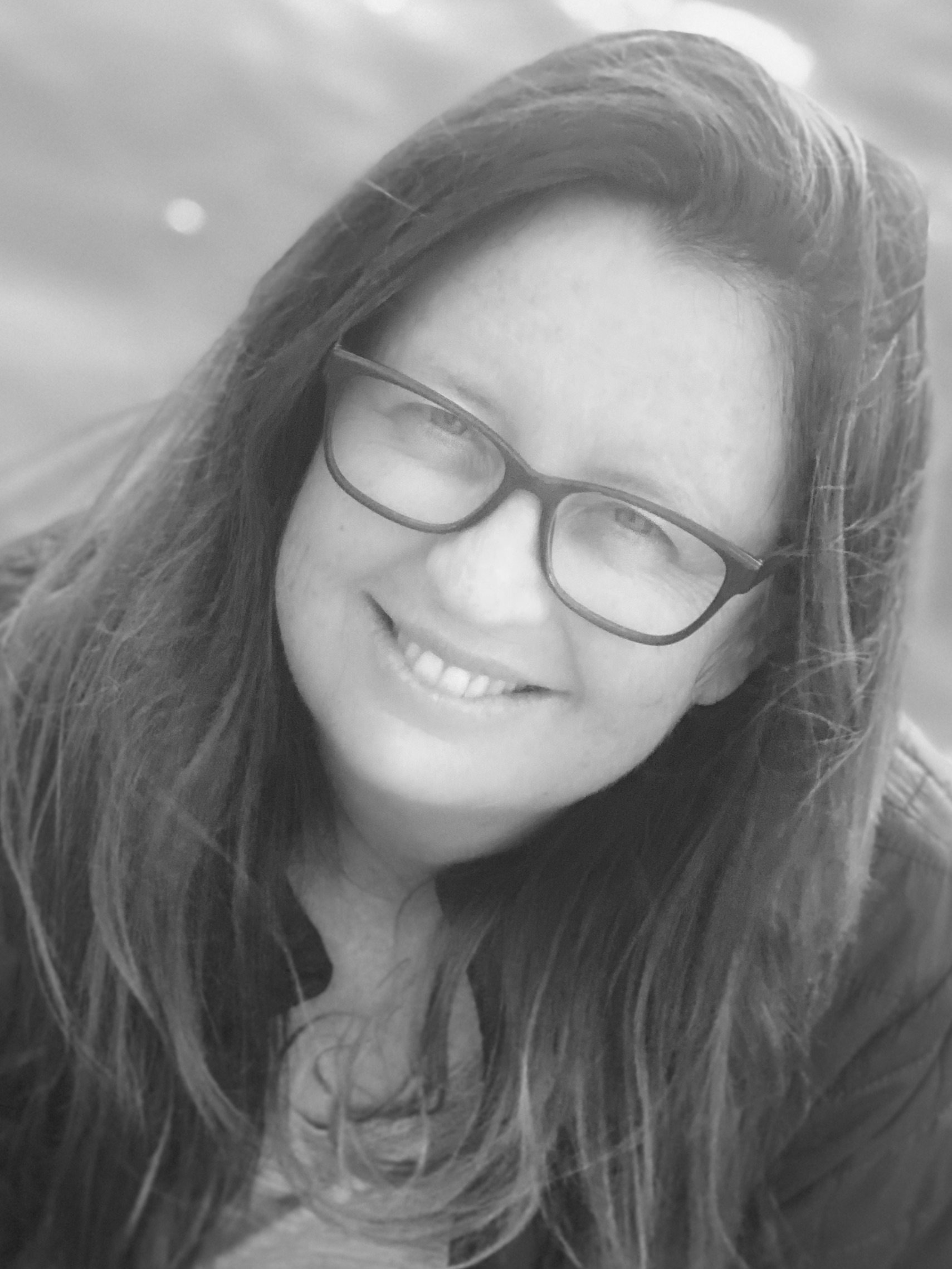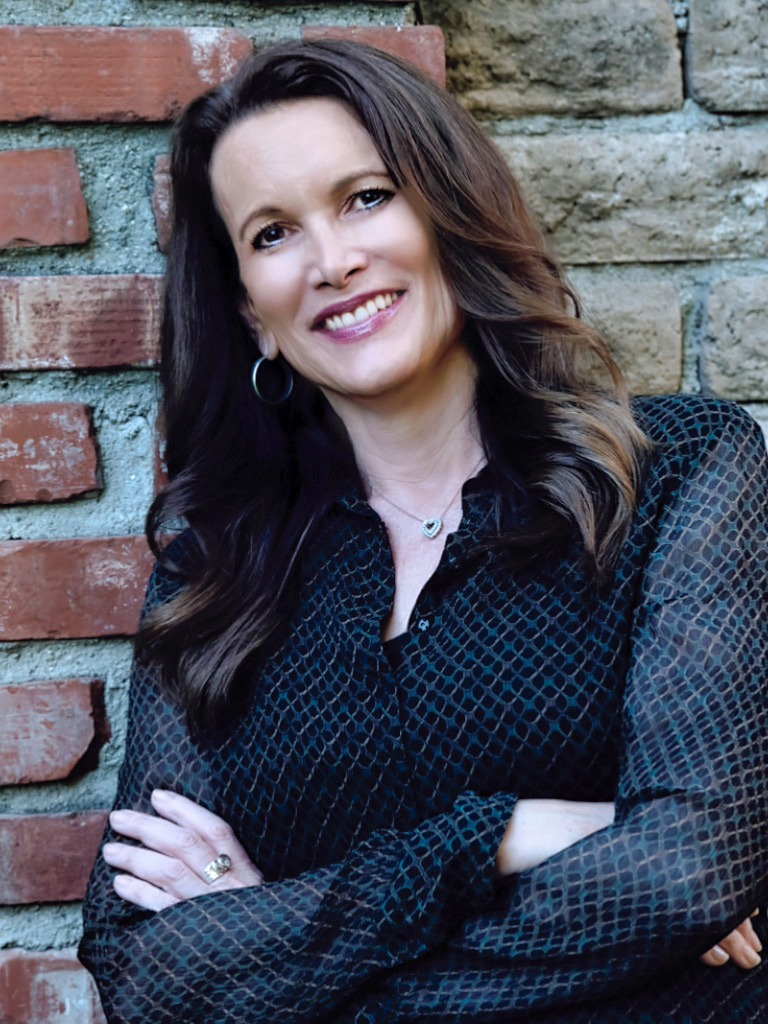The first time I saw Hope Edelman’s The AfterGrief: Finding Your Way Along the Long Arc of Loss, it was a manuscript in ten-inch stacks covering the entirety of her dining table. She was in research and interviewing mode in her Iowa City home. The sheer volume of papers, books, and articles looked overwhelming. But Hope Edelman wore a smile that said the opposite. A seasoned writer focused on her eighth nonfiction book, Edelman was centered on a subject matter near to both her lived experience and her prior work. Seeing the long-hand legal pads and reams of articles was like viewing an x-ray of the book that would become The AfterGrief.
I recently saw The AfterGrief, in my local library. Highland Park was in the immediate aftermath of the mass shooting that took place just a few blocks away on July 4, 2022.
On a holiday weekend, not only did my town endure mass gun violence––seven slain and fifty-two injured––but the South and Western portions of Chicago––only twenty-five miles away––endured nine deaths and more than fifty injuries from gun violence. On July 5th, gunmetal gray fog covered the East—Lake Michigan and the shoreline. The natural world echoed the collective grief.
I was experiencing what Hope calls “new grief,” which she describes as “like staring into the sun […] unsustainable.” Copies of the striking blue cover of the glossy hardback were stacked just inside the Highland Park library entrance, sitting prominently in the path of anyone who might walk through the doors.
I knew Edelman’s book would be relevant when released into a world experiencing a global pandemic. But I didn’t know just how fitting it would be in the midst of community-wide grieving. My town’s librarians had placed The AfterGrief in the literal path of and for the bereaved. Hope Edelman’s sentences returned to me with new relevance, especially her advocacy for “grief support as a social responsibility, as an investment in the collective good.” Librarians have always seemed to serve as harbingers of collective good. But with this placement, I felt a more immediate appreciation.
Even though I had my own copy at home, I walked toward those on the library display. I ran my hand through the pages. Seeing Edelman’s book so close and available for the community, I felt moved by her sustained dedication to loss in a new way—the writing, understanding, and support of the grieving.
Edelman’s words reminded me of the small opening on top of the cargo plane I used to fly. Early navigators on the plane used the portal to look out toward the stars and sun for celestial navigation. Although we didn’t rely on that antiquated method with advances in technology, the portal remained there and crew members trained with a sextant in case we lost all electronics while crossing an ocean.
Each chapter in The AfterGrief, from “Stories of Sudden Death: Narratives Compressed,” to “Stories of Loss Are Also Stories of Lives,” to “Stories with Missing Pieces: The Search for Resolution,” felt like a connecting point in a constellation, making a type of bereavement map. The AfterGrief, like Edelman’s other works, is there for anyone when the shadow of loss blocks internal navigation. Or for those in grief-support roles.
I asked Hope about some of the personal aspects around craft––how a writer devoted to the “multidimensional and extended arc” of grief keeps at it, and how her writing life intersects with the greater world. I’m grateful Hope agreed to this interview, which we completed long before my community was touched by tragedy.

TriQuarterly: Can you tell readers of TriQuarterly a little bit of what brought you to writing your latest book, The AfterGrief?
Hope Edelman: I’ve been leading retreats for motherless women and doing one-on-one coaching with them for about five years. During that time, I’ve observed a constellation of long-term adjustments that adults bereaved as children continue to make throughout their lifetimes. This wasn’t exclusive to women without mothers; I was hearing similar stories from women who’d lost fathers or siblings and also from men with many kinds of long-ago losses. Very little had been written for a general audience about how the repercussions of a major loss might keep showing up in one’s life ten, twenty, even forty years later. Yet those of us who’ve experienced it know that over time, grief shifts into something else, something softer and lighter but still ever-present. I was interested in learning more about the lifelong process, and that idea ultimately evolved into The AfterGrief. My first book, Motherless Daughters, has a similar origin story: I couldn’t find the book I needed on that subject, so I decided to write it myself.
TQ: In addition to Motherless Daughters and The AfterGrief, you’ve written seven other books, too. You’re prolific— can you share some of the details of your writing process? Do you write every day?
HE: I wish I wrote every day. When I hear about writers who wake up every morning, go straight to their desks, and write for three or four hours straight, I can’t even imagine what that must be like. I don’t possess that kind of consistency or discipline, mostly because like so many writers, I wear five or six hats, and it’s hard for me to keep changing them in the course of a single day. I’m a classic binge writer. I’ll set aside a few days at a hotel or AirBnb, or when I’m lucky, a week at a writing residency like Hedgebrook. I can write more in four days of intensive work than in ten days of stop-and-start writing
That said, this last book came out differently. I wrote the bulk of The AfterGrief between February and June of 2020, when Los Angeles was under lockdown. I got up every morning, poured a cup of coffee, sent a few morning emails, and then sat at my dining room table for six to eight hours and knocked out the book. I don’t know if a similar opportunity will ever arise again—I hope not, for the obvious reason—but those months of focused immersion were good for my creativity and, I hope, for the book as well.
TQ: That’s quite a shift in process. How else was writing this book different from your prior nonfiction? Or how was it the same?
HE: It was the same as some of my earlier books insofar that it’s written in a hybrid format, interlacing memoir, interviews, and research. It had been a while since I’ve written that type of book—2006, to be exact—and I felt a little rusty striking the right balance at first. Once I got into the rhythm again, it flowed pretty smoothly.
This book was different from my prior manuscripts because it just took so damn long to write. It was four years from start to finish, definitely a record for me. I sold the proposal in the summer of 2016, but the concept was premature—I realized that after about a year—and it took me a while to figure out what I really wanted to say. I must have rewritten the first 120 pages of the book eleven or twelve times, to the point where my editor, Marnie Cochran at Penguin Random House, said, “I need to start seeing new material.” I’d already received two deadline extensions by then.
The proposal was sold with a working title that changed several times over three years. But once The AfterGrief came to me, the material coalesced around that idea, and the chapters and the concepts fell into place very quickly from there. I’m lucky that Marnie has so much patience. If she’d pushed me harder to meet one of my earlier deadlines, it would have been a different book. A less fully realized one, I think.
TQ: Research is signature to your writing. Can you talk more about how you approach it when you set out to start a new project?
HE: I tend to front-end my research and interviews and do as much as possible before I start writing. On the one hand, this gives me ample time to aggregate material and start synthesizing it to come up with connections of my own. On the other hand, it means that when I’m ready to write, I’ve accumulated a sometimes-unwieldy mountain of source material. I’ve tried to write as I research but have never been very successful with that approach.
I’m intrigued by the work of Kathy Kolbe, who studies conative styles, which are instinctive ways of doing things. Essentially, she looks at the different ways that people get stuff done. Kolbe identifies four action modes: “Quick Start,” “Implementor,” “Follow-Thru,” and “Fact Finder.” “Quick Starts” like to dive right into a project, improvise, and take risks. “Implementors” tend to create structural, physical models to build solutions. “Follow-Thrus” design systems and like to create shortcuts. “Fact Finders” gather and analyze data before making a move.
Many people operate at least sometimes from each action mode. When I took the 36-question online test to see where my strengths lay, I scored ridiculously high on “Fact Finder” and very low on everything else. I guess data-gathering is just part of my nature. So, I’ve learned to surrender to the research-first-and-write-later approach. Now, it’s more a matter of knowing when to stop researching and start writing. I’m such a history and fact nerd that I can keep finding rabbit holes to wander down forever. At one point, my first editor threatened to show up at the library and escort me back to my office desk to get me going
TQ: Those four conative styles are so interesting. Your “Fact Finder” bent makes sense knowing of your background as an undergrad at Northwestern University in the Medill School of Journalism. What do you think is the most important thing you learned at Medill that informs your memoir and other personal writing today?
HE: It would have to be the skills I developed as an interviewer, mainly in the news writing class I took as a sophomore. It was taught by a former Chicago newspaperman who was gruff and tough and also utterly committed to training the next generation of journalists. I often think of tips he passed on to us, like “You don’t need to describe the hallway on the way to the kitchen. Just begin the next paragraph with, ‘In the kitchen…’” and “Use silence to your advantage,” meaning wait for someone to speak before filling the space with your own words, and “Always leave your tape recorder running. Some of the best quotes will come when you’re walking out the door.” I minored in anthropology and my courses in ethnographic research and interviews, particularly with regard to pattern identification and inductive reasoning, have also been essential to my work, especially with the books—Motherless Daughters, Motherless Mothers, and The AfterGrief—where I interviewed hundreds of subjects.
TQ: At what point in your process do you share your drafts with your first readers? Or by the eighth book, is this a process mainly between you and your editor?
HE: For about six or seven years, I was part of a writing group in Los Angeles, all women working on nonfiction books, and they were always my first readers. I’d take their feedback on an essay or chapter into consideration and do edits before sharing the pages with my editor. The group disbanded a few years ago when book contracts and publications became more difficult to obtain. Now, I’ll sometimes run a chapter by my agent before my editor, because my agent is an excellent reader. If I’m pressed for time, I’ll send it to my agent and editor at the same time.
Because I’m a dreadfully slow writer, and also because I like to get feedback while in process in case I’ve gone astray and need to redirect, I usually supply my editor with one to three completed chapters at a time. I revise enthusiastically as I write, so by the time she receives a chapter, it’s usually in a 4.0 or 5.0 state. I know writers who prefer to finish an entire draft and submit the manuscript in its totality, but again, I’m so slow that my editors always appreciate seeing visible proof of progress.
I also revise chapters based on my editor’s feedback, sometimes before I start a new one. Because of all this revision, by the time I write a final chapter, the preceding chapters may be in 9.0 or 10.0 shape, and I’ll only have time to get the epilogue into a third or fourth revision. Nora Ephron wrote about exactly this in her essay, “Revision and Life.” She said by the time she finished an essay, her opening paragraphs had been revised a dozen times or more (she would retype them, in those days), and her final paragraphs would still be an early draft. This may be why the openings to her essays often feel stronger than the closings. I read that and thought, I’ve found my literary soul sister.
TQ: That’s an interesting insight into your process. And sharing a craft trait with the inimitable Nora Ephron—fascinating. What do you consider the greatest craft tool for a writer?
HE: At the risk of sounding really wonky here—it’s punctuation. I admire writers who are agile and creative about breaking the rules of punctuation for effect, especially in dialogue. So much can be conveyed with a judiciously placed ellipsis or em dash. I’m also a big fan of the semicolon. That places me in a minority of writers, I realize, but what can I say? Some complete sentences just aren’t meant to stand alone.
TQ: Your fondness for the semicolon seems like a natural parallel to your theme of grief; the onset of a loss (like one “independent clause”) sparking a new life (another “independent clause”) of living with said loss. You coined the term “AfterGrief” for this book. Would you interpret “AfterGrief” as a type of semicolon itself—a moment between loss and the life forged after great loss?
HE: I think of the AfterGrief more as an ellipsis, an ongoing, open-ended experience that extends into an indefinite, expansive, unknown future.
TQ: I love that. You’ve talked about losing your mother when you were seventeen and about holding a pamphlet in the hospital after her death about Kübler-Ross’s “five stages of grief.” How much of the impetus behind your desire to write was/is a response to those five prescribed stages?
HE: It took a while before I understood that the Five Stages of Grief were a bad bill of sale to the general public. My experience was cyclical rather than linear. At first I thought that must mean I’d grieved wrong. But when I started doing interviews for Motherless Daughters then I discovered there were other women out there who were having grief experiences similar to mine. At one point I went out for lunch in New York with my editor, who was also very young when her mother died. I told her, in a state of near-despair, “I wanted to write a book to help women come to terms with the loss of their mothers and move beyond it, but all I keep hearing is that the grief never goes away.” She said, “If that’s what the experience is like for the majority, that’s what you need to write about. Readers will be grateful that you’re telling them the truth.” She gave me permission to tell it as I saw it, and as I understood it. I’ll forever be grateful to her for that. It was Liz Perle, a brilliant editor and mentor. She passed away in 2015, to the same disease that took her mother’s life, both of them taken much too soon.
TQ: Thank you for sharing that about Liz Perle. As a writer seeped in all-things-grief-related, how do you balance your study of loss and the need for joy, lightness, and humor?
HE: That’s a terrific question. I wish I had an answer that could do it justice. Especially during these past few Covid years, like everyone else I’ve been surrounded by grief. Even more so because it’s my field of work. And I’ve been going through a divorce, which is a different but equally legitimate form of grief, as I’ve come to appreciate. As a coach, I’ve become trained at compartmentalizing. That means I’m able to occasionally push aside my own heaviness or distress and focus on other people’s stories and also on the lighter side of life. I’m relieved to report that I haven’t lost my sense of humor or my sense of sarcasm these past two years. Even in the hardest moments, I’ve found many occasions to laugh.
TQ: Is there anything you can share about your next project? What comes after The AfterGrief?
HE: For the past year or so I’ve been focused mainly on creating programming for adults bereaved as children, including Motherless Daughters Community Calls that take place every Tuesday and Thursday. (www.motherlessdaughters.com/community-calls) I also lead online and in-person retreats and coaching programs for women who’ve lost mothers. But I’m starting to feel the itch to write again, and I’m starting with some personal essays that have been pinballing around in my mind for a while. At some point, I might write a book about midlife lessons in impermanence and uncertainty, and what it’s like to have your life stripped down to the studs in your mid-50s. It’s been a life-altering two years. I’ll need a little more critical distance before I know what it all means, though. I’m still very much living through it.



